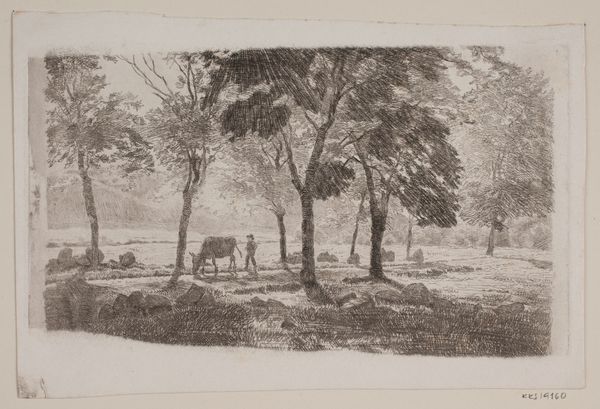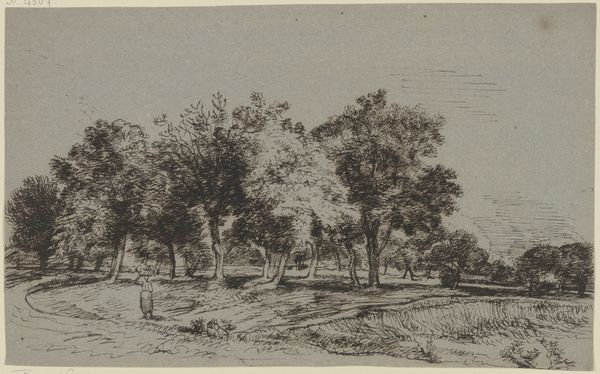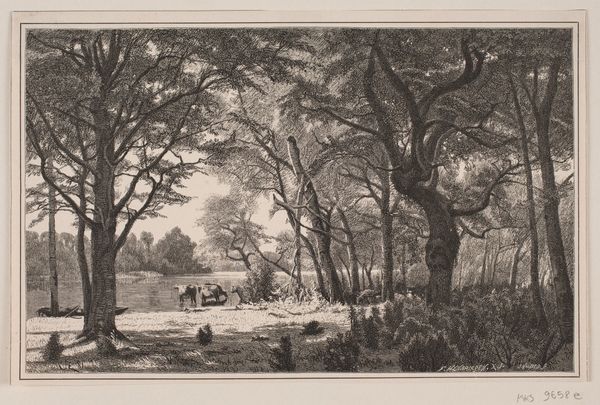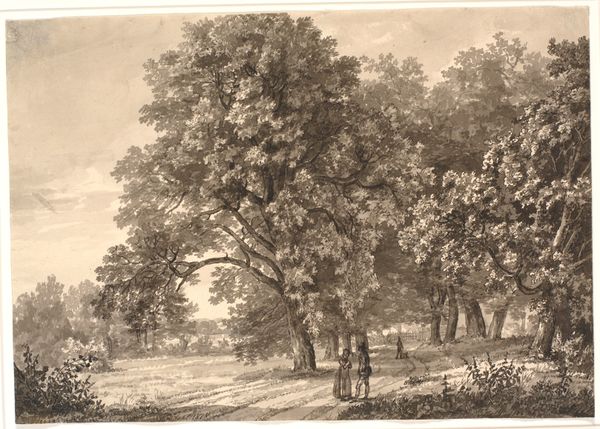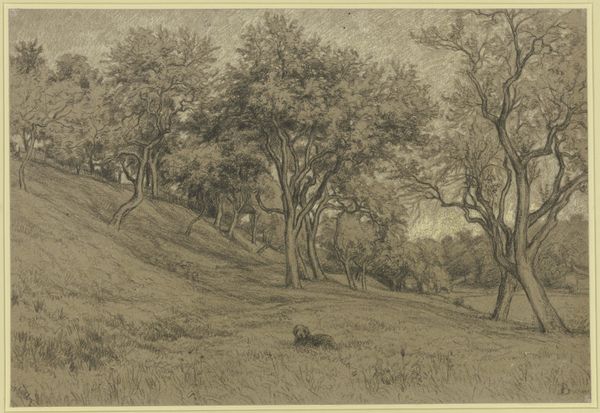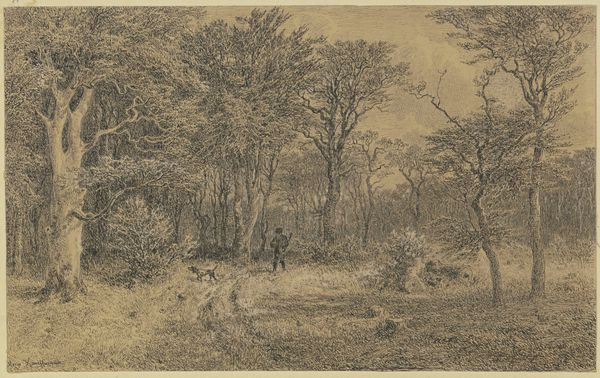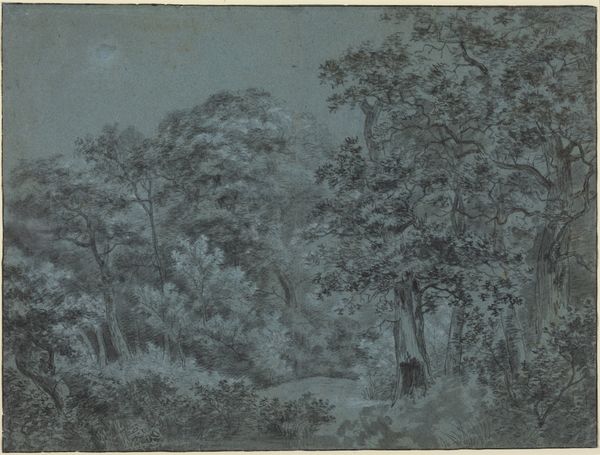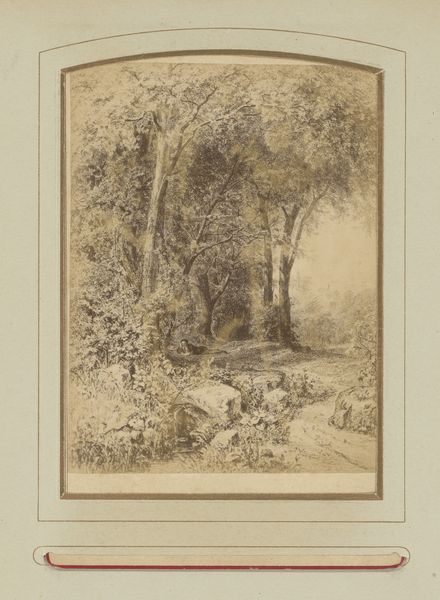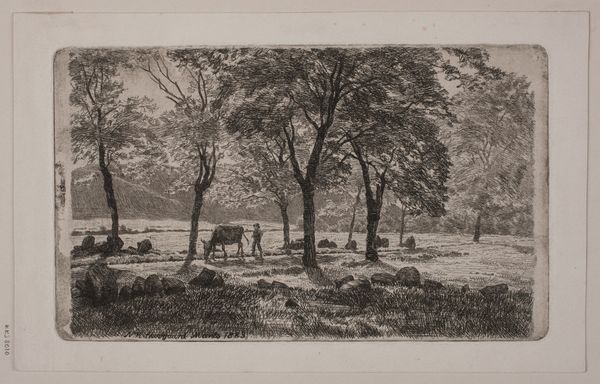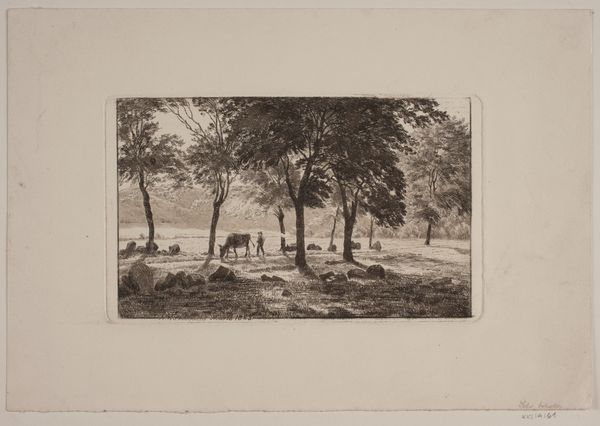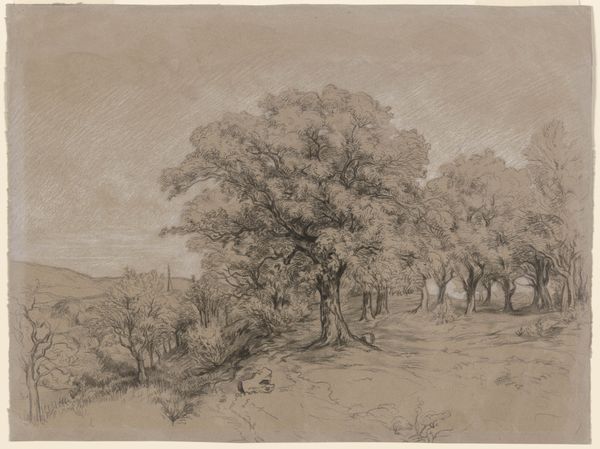
Mann auf einer bei der Gerbermühle gelegenen Wiese unter hohen Bäumen mähend
0:00
0:00
drawing, paper, pencil, chalk, charcoal
#
drawing
#
landscape
#
paper
#
pencil drawing
#
romanticism
#
pencil
#
chalk
#
charcoal
#
realism
Copyright: Public Domain
Editor: This drawing by Karl Peter Burnitz, "Man Mowing in a Meadow by the Gerber Mill Under Tall Trees," done in pencil, chalk, and charcoal on paper, possesses a quiet, pastoral feel. The towering trees dominate the scene. What symbols or historical connections stand out to you? Curator: I see a powerful evocation of man's relationship with nature. Notice how the lone figure mowing almost disappears within the vastness of the landscape. Does that image suggest something deeper about the cultural memory surrounding labor? The tool is also relevant, what does the scythe represent to you, culturally? Editor: The scythe suggests time, reaping, and perhaps even mortality, but also labor itself and sustenance. The man, nearly invisible, is nonetheless the active agent, making space. It feels deeply symbolic. Curator: Precisely! Burnitz places the human figure in a landscape that is both nurturing and indifferent. The Romantic era was fascinated by the sublimity of nature. How do you think this piece relates to that fascination, or perhaps subverts it? Consider that the labor depicted makes civilization possible. Editor: It feels more grounded, less dramatic than some Romantic landscapes. The man is working, not contemplating a sublime vista. It’s like a critique, maybe? Showing the labor that underpins the awe. Curator: An interesting thought! Perhaps Burnitz is offering a subtle commentary on the relationship between idealized nature and the lived realities of rural life. Consider the weight each symbol bears and contributes to the meaning. Editor: I hadn't considered how those layers could co-exist. The drawing makes you ponder both the beauty and the underlying realities that the aesthetic can sometimes mask. Thanks. Curator: Indeed! Recognizing the duality enriches the image, allowing us to perceive the symbols more wholly and form connections across time.
Comments
No comments
Be the first to comment and join the conversation on the ultimate creative platform.
